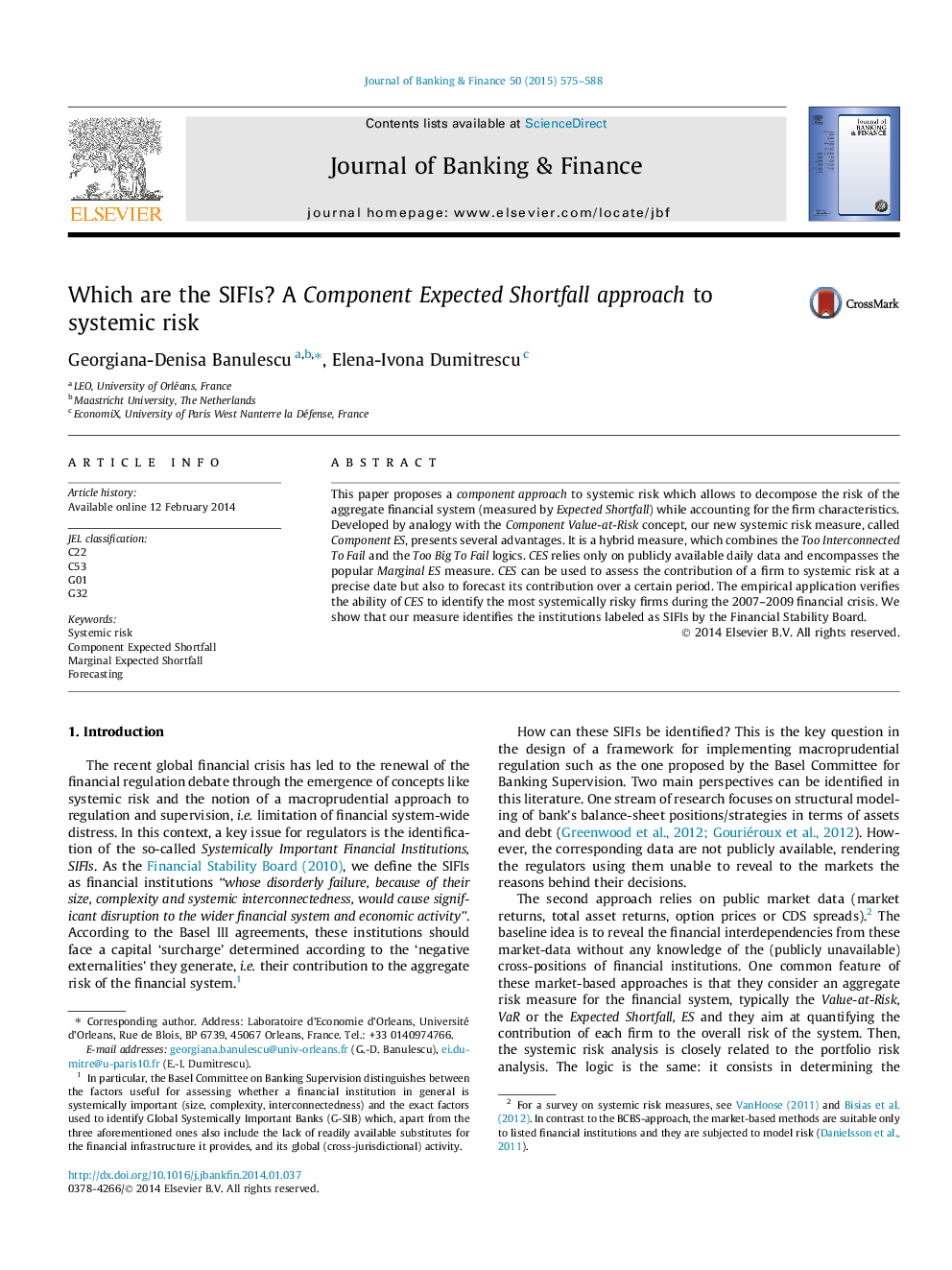| Article ID | Journal | Published Year | Pages | File Type |
|---|---|---|---|---|
| 5088598 | Journal of Banking & Finance | 2015 | 14 Pages |
•We propose a simple and parsimonious method to identify the SIFIs.•The larger the contribution (CES%), the more systemically important the institution.•CES is a forward-looking method, useful in forecasting and financial regulation.•Tighter supervision for a handful of institutions who concentrate most systemic risk.•SIFIs ranking based on CES is relatively stable in time, which is relevant for policy.
This paper proposes a component approach to systemic risk which allows to decompose the risk of the aggregate financial system (measured by Expected Shortfall) while accounting for the firm characteristics. Developed by analogy with the Component Value-at-Risk concept, our new systemic risk measure, called Component ES, presents several advantages. It is a hybrid measure, which combines the Too Interconnected To Fail and the Too Big To Fail logics. CES relies only on publicly available daily data and encompasses the popular Marginal ES measure. CES can be used to assess the contribution of a firm to systemic risk at a precise date but also to forecast its contribution over a certain period. The empirical application verifies the ability of CES to identify the most systemically risky firms during the 2007–2009 financial crisis. We show that our measure identifies the institutions labeled as SIFIs by the Financial Stability Board.
